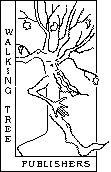Review of Tolkien and Wagner: The Ring and Der Ring

 (to the main page on Tolkien and Wagner: The Ring and Der Ring)
(to the main page on Tolkien and Wagner: The Ring and Der Ring)
The following review was written by Ross Smith and appeared on Amazon.
Link to review on Amazon:
http://www.amazon.co.uk/product-reviews/3905703211/
Text reproduced below with kind permission of Ross Smith.

An essential contribution to Tolkien scholarship, 15 Jan 2013
By Ross Smith
This review is from: Tolkien and Wagner: The Ring and Der Ring (Paperback)
Serious studies of Wagner's possible influence on Tolkien have been hampered to date by two major obstacles. The first is Tolkien's steadfast refusal to admit any significant prior influence with regard to his fictional creations. He would grudgingly accept that some ancient sources, such as Beowulf, might have found their way into his stories, but he was most unwilling to admit to any more modern influence. The second is the reputation of Wagner himself: his association with the Nazis and with Nietzsche make him a delicate subject, however illogical, or even tiresome, this may sometimes be.
Dr. MacLachlan does not trundle out the usual objection to the Wagner-Hitler association, this being that the former died six years before the latter was even born and therefore any linkage to the Nazis was hardly his fault. Undoubtedly aware that the ethical minefield of Wagner's opinions on race and statehood is best given a very wide berth, the author concentrates on questions of Art. MacLachlan's purpose is predominantly literary and he sticks to his mission of explaining what he regards as the undeniable influence of Richard Wagner's four "Ring" operas on Tolkien's "The Lord of the Rings" and "The Hobbit".
His explanation is very convincing. As MacLachlan tells us with admirable clarity, other scholars have come very close to openly stating that "The Lord of the Rings" is deeply indebted - in terms of theme, storyline and cast - to the Ring Cycle, but at the last minute they have shied away, probably too fearful of bringing upon themselves the accusation of being the first to clearly associate the venerable old Professor with the disgraced totalitarian composer. Safely on the fringe of the Tolkien Establishment, MacLachlan has had the courage to keep to his course and follow his arguments to their logical conclusion: that indeed, the Ring Cycle is not just an influence, but that it resonates through "The Hobbit" and "The Lord of The Rings" all the way from Hobbiton to Mount Doom. Others may have seen through the emperor's new clothes and kept quiet; this book states its findings out loud and therefore takes what, in my opinion, is an extremely significant step in clarifying where Tolkien's fiction comes from and additionally, what it is about. By accepting that there are parallels with Wagner's creations, MacLachlan finds new angles from which to analyse Tolkien's characters (particularly Gandalf, who is brilliantly examined), stories and mythology.
The author has a finely honed sense of irony which at times he brings to bear on both Wagner and Tolkien. Devotees of the Professor should therefore be ready to see the object of their devotion coming in for a bit of flack; MacLachlan pulls no punches in his analysis. However, serious students of Tolkien do not put him on a pedestal, but accept his shortcomings along with his great and enduring strengths. This book does not undermine Tolkien in any way; instead, it broadens our understanding of his work. We should be grateful to Dr. MacLachlan for pulling away the veil. This is one of the most significant books of Tolkien criticism to be published in the last twenty years, and should be read by anyone wishing to gain a truly comprehensive understanding of Tolkien's art.

Read other reviews of Tolkien and Wagner: The Ring and Der Ring
Read reviews of other Walking Tree Publishers books

